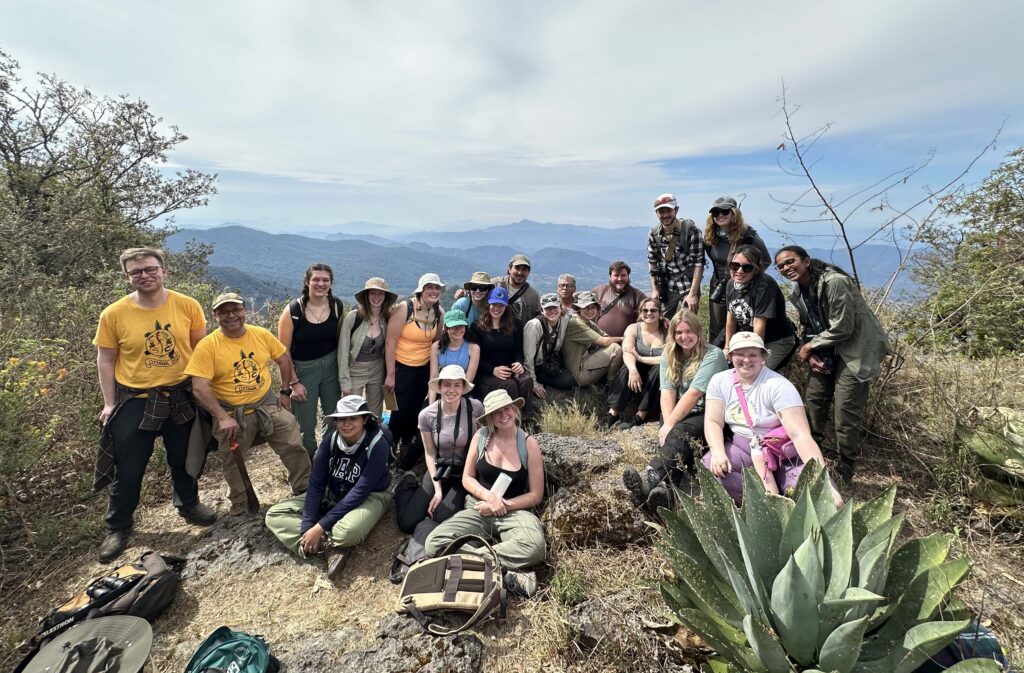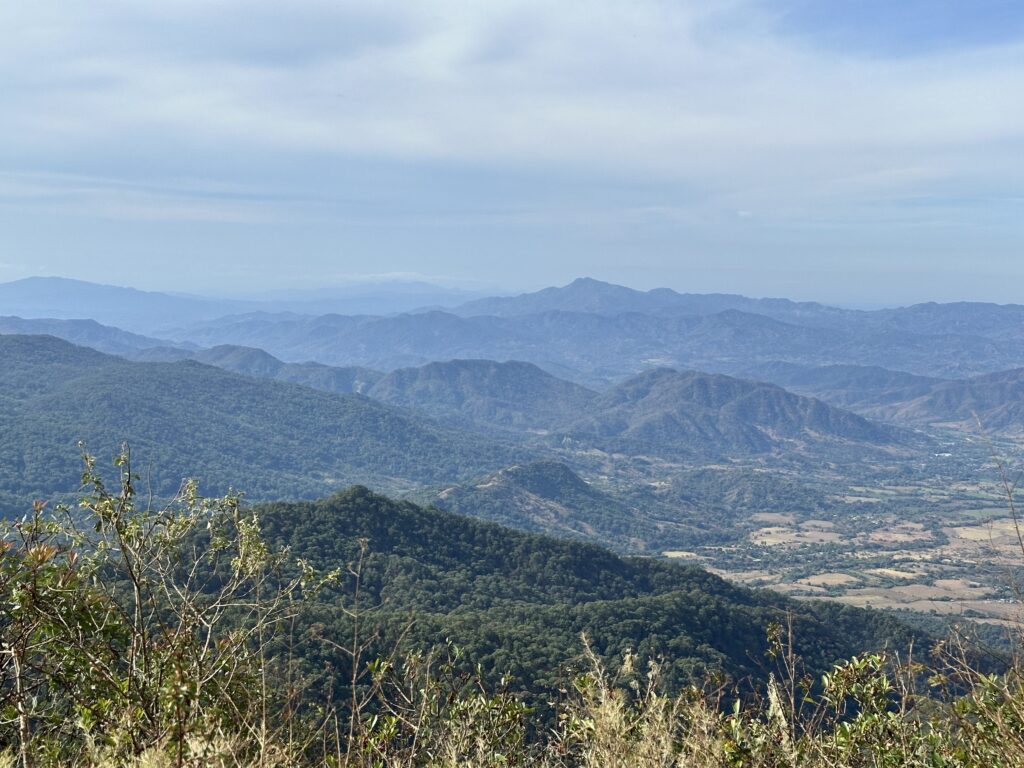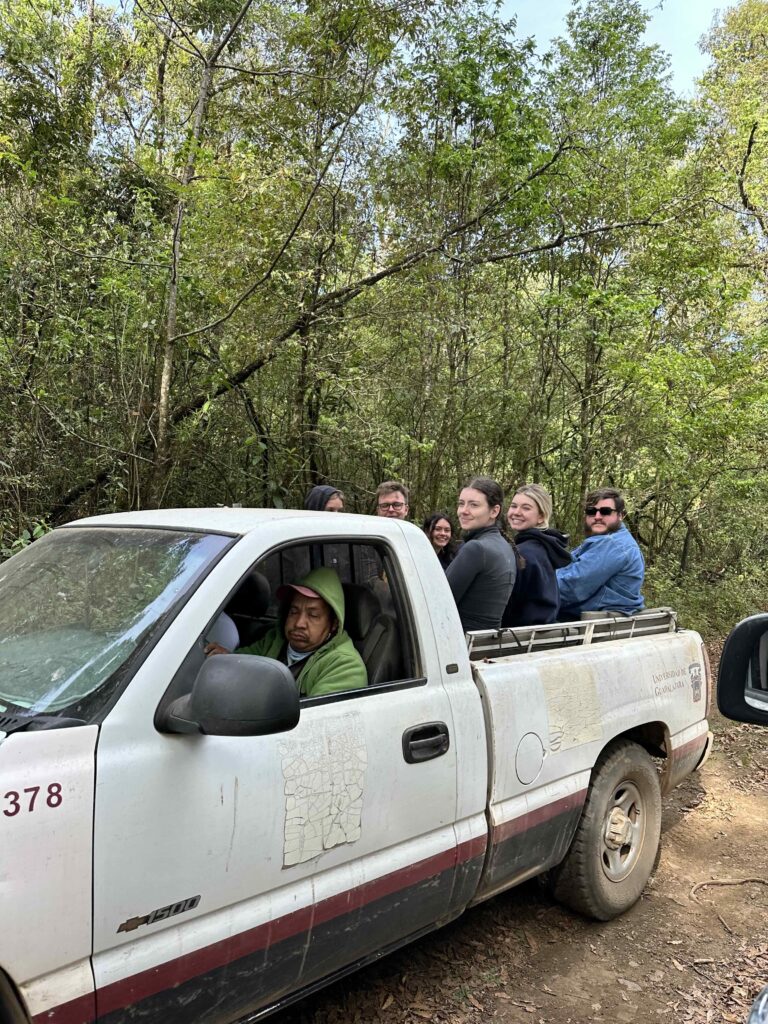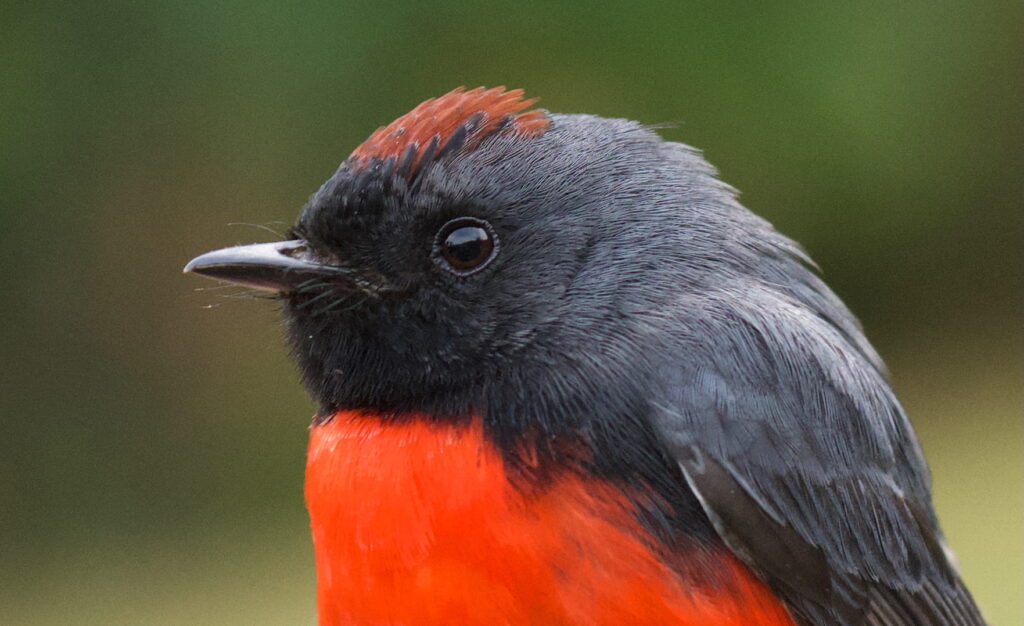Grupo 4 /Group 4. Clarisa, Alex, Bethany, David
Sienna’s 23rd birthday started bright and early for some; Javier, (Mexican) David, and Alexia set up three bird catching mist nets around six in the morning. Many others also got up early to watch. Javier gave an explanation and demonstration on how to extract, handle, and measure key characteristics of birds caught in the net, all before breakfast. A few of us had the chance to handle birds, including a Blue Mockingbird (Melanotis caerulescens), a Slate-throated Redstart (Myioborus miniatus), a White-eared Hummingbird (Basilinna leucotis), and a White-Throated Thrush (Turdus assimilis – the same genus as our American Robin!), although the thrush escaped (Bailey assures us he will redeem himself with another bird).
Then we started up the mountain to the mirador (lookout) Paraje El Almial; some of us by truck, others on foot. Once there, we all took in the incredible views of the city of Autlán de Navarro and the surrounding agricultural area. After a mostly unsuccessful search for hummingbirds, we all started back down the trail, looking under rocks and logs for lizards and amphibians. We found cool some reptiles (a few collared lizards and a Mexican brown snake, Storeria storeroides), as well as many interesting butterflies and a few scorpions.
A group of rival Canadians arrived at Las Joyas Field Station, a forestry class from the University of Alberta.After lunch, some of us decided to take a shower while the water was still warm, while others continued to walk around the property with their camera lenses and/or binoculars as their eyes. Once we had all decompressed in our own way, we gathered for our next field event. Steve handed out a pine tree field guide to each group, paired with a warning of the tears soon to come.
We each set off in our groups and had two hours to ID as many pines as we could… spoiler, it was not many! We quickly learned that identifying pine trees, especially in megadiverse Jalisco, is a very challenging task. Most groups managed to ID only three pines. When we all returned at 6 pm, we may not have been in tears but a lot of us wereclose to hysteria. In the debrief we discussed how challenging pine ID can be, especially when you need binoculars to see the most characteristic parts of the tree and there is much botanical jargon to cope with.
Both Alex and Bethany did their species presentations on the Bell’s False Brook Salamander (Isthmura bellii) and the Amethyst-throated Mountain Gem (Lampornis amethystinus), respectively. After dinner, many of us gathered in the lodge to sing camp songs and generally cause a ruckus, while gearing up to confront the Albertans.

At the look our ~ 2100 meters above sea level.

Hike down from the mirador

View from the top

Get a drive up and hike down. That is the way

Slate-throated Redstart
Leave a Reply